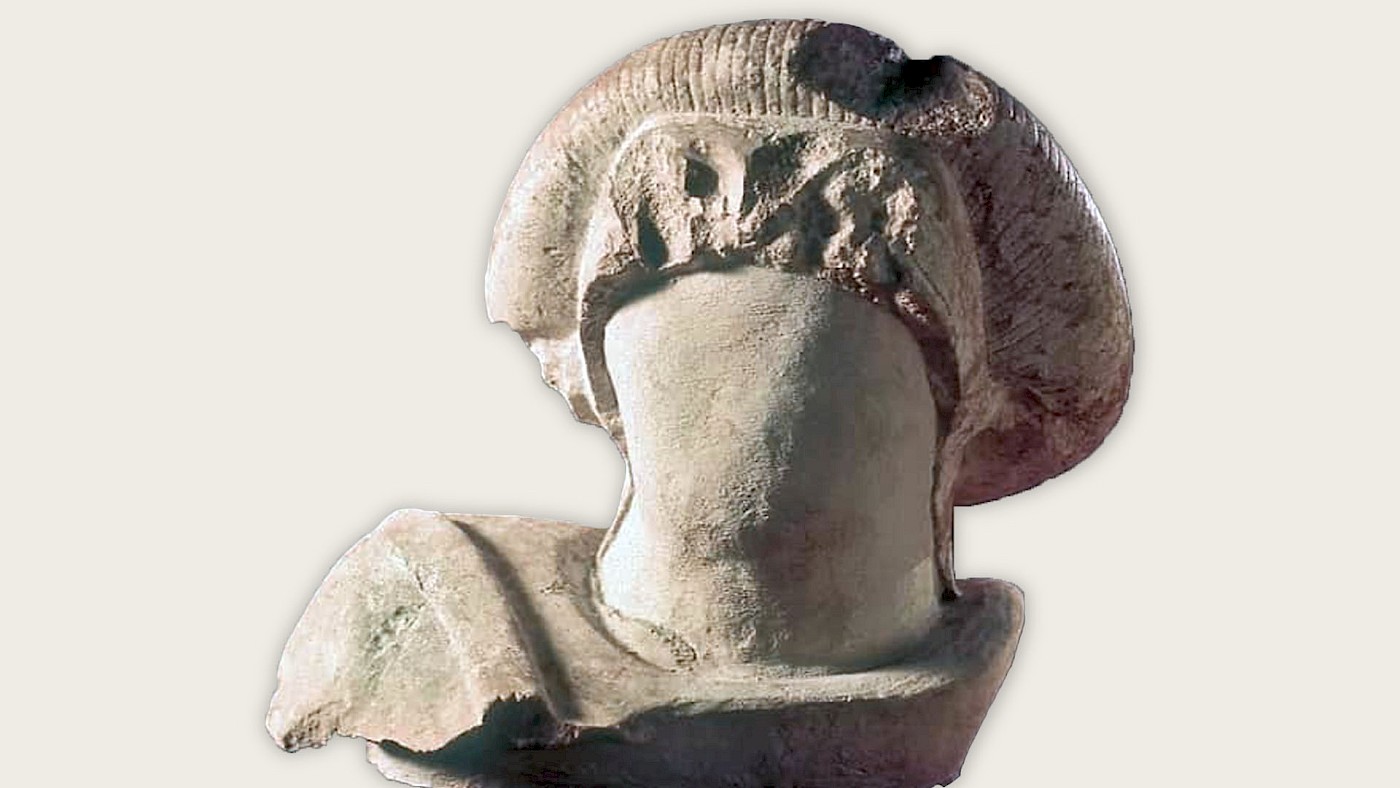Each person’s identity has multiple aspects. How do you identify yourself? You can do so based on your social role or job, the role you have in your family, your ethnicity, your gender, and so on. You can also vary the part(s) of your identity that you emphasize or display, depending on the people you interact with.
This was also true for people in ancient times. An interesting example of this is a fragmentary statue from Tell el-Dab’a, a site in the Eastern Delta that has been identified as Avaris, the capital of the Hyksos Dynasty of Egypt. This site was an important hub in the trade and communications networks of the eastern Mediterranean, as well as between the Mediterranean and the inner parts of Egypt, not only by sea, but also by land, through the Sinai.
The Hyksos, corresponding to what is conventionally known as the Fifteenth Dynasty, were one of the ruling dynasties of the Second Intermediate Period (ca. 1775–1550 BC). During this period, Egypt was divided both politically and culturally, with multiple dynasties ruling in different areas at the same time. In particular, the Hyksos had Levantine origins (i.e. from modern Syria, Palestine, and Lebanon). They probably arose from the Levantine communities living in Tell el-Dab’a (Avaris).
The Levantine presence in the Nile Delta was nothing new or peculiar to the Second Intermediate Period. Already during the Middle Kingdom (ca. 2055–1775 BC), when the country was united under one dynasty ruling from the area near the oasis of the Fayyum, Tell el-Dab’a had a mixed community, which included people from the Levant. Other places in Egypt were inhabited by Levantine groups during the late part of the Middle Kingdom, such as Lisht, located not far from that period’s capital.
A fragmentary statue from Tell el-Dab’a
The fragmentary, larger-than-life statue from Avaris, part of which is depicted at the top of this article, dates to the late part of the Middle Kingdom. It is made of sandstone, and the different pieces still feature traces of colour. The statue represents an official, seated and with a Throw stick held at the left shoulder. The yellowish skin colour, mushroom-shaped red hairstyle, and fringed dress are of a type usually associated with people from the Levant.
The fragments of the statue, which was perhaps originally housed in a structure above the graves, were found scattered across several tombs in a cemetery located in what the excavators of Tell el-Dab’a have called area F/I. This part of the site was occupied mostly from the late Twelfth to the early Thirteenth Dynasty. In particular, the tombs of the cemetery feature grave goods with Levantine influence, imported or otherwise made locally.
The person represented by the statue must have had an important role in Tell el-Dab’a. He is represented using features that especially the Egyptians associated with his (presumed) Levantine origins. At the same time, the pose and the style of the statue are clearly Egyptian. Levantine people clearly played important roles in the society, but were still subject to Egyptian rule, and they depicted themselves according to Egyptian standards.
In Egyptology, people from the Levant are commonly referred to as “Asiatics” – ’Amu¸ to use the Egyptian word – without any further distinction as to their provenance. Therefore, we cannot determine the precise groups that formed the Levantine community and the history of their arrival in Egypt. In general, features traditionally associated with the Levantine culture are most evident in earlier tombs, probably because the community was less well integrated into the Egyptian society. During the early part of the Second Intermediate Period, temples were constructed of Levantine type, which indicate the use of Levantine religious practices.
Nevertheless, archaeological evidence – especially the grave goods and the names mentioned on the name-lists – shows that people of Levantine origins progressively adopted, in a period covering only a few generations, Egyptian cultural traits. This trend emerges especially from the archaeological material excavated at Tell el-Dab’a: the layout of the cemeteries, the architecture of the tombs and of their superstructures, the position of the deceased, the funerary goods, and the offering deposits.
All in all, people from the Levantine communities could rise to high social status. They were active as mercenaries, held administrative functions, were involved in mining operations in the Sinai, and were engaged in seafaring. Nevertheless, as this fragmentary statue demonstrates, as well other evidence such as the depictions from the tombs at Beni Hasan, their representations remained stereotyped. Depictions of Levantine people in Egypt were nevertheless made to conform to Egyptian traditions and standard – which included the depiction of elements that they deemed typical of other peoples, such as the mushroom-shaped hairstyle and other elements of the fragmentary statue from Avaris.
Further reading
- R. Schiestl, “The statue of an Asiatic man from Tell el-Dabʿa, Egypt”, Ägypten und Levante 16 (2006), pp. 173-185.
- R. Schiestl, Tell el-Dab’a XVIII: die Palastnekropole von Tell el-Dab’a. Die Gräber des Areals F/I der Straten d/2 und d/1 (2009).
- R.T. Sparks, “Canaan in Egypt: archaeological evidence for a social phenomenon”, in: J. Bourriau & J. Philips (eds), Invention and Innovation: the Social Context of Technological Change 2: Egypt, the Aegean and the Near East, 1650-1150 BC. Proceedings of a Conference Held at the McDonald Institute for Archaeological Research, Cambridge, 4-6 September 2002 (2004), pp. 25-54.
